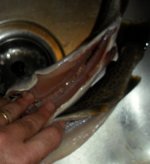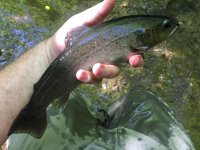Dave_W
Moderator
Staff member
The topic of the coloration of hatchery trout based on diet has come up (again). In the past, the matter of adding paprika or other supplements has been shown (I think) to affect the coloration of hatchery brown trout in a positive way: deeper reds and stronger yellow flanks etc.
Private clubs have long stocked fish that were "better" in large part due to the aesthetically pleasing coloration of their fish, BTs in particular.
If you have experience, links, or opinions on this, by all means comment. It's an interesting topic for those of us who appreciate the beauty of trout.
Private clubs have long stocked fish that were "better" in large part due to the aesthetically pleasing coloration of their fish, BTs in particular.
If you have experience, links, or opinions on this, by all means comment. It's an interesting topic for those of us who appreciate the beauty of trout.





